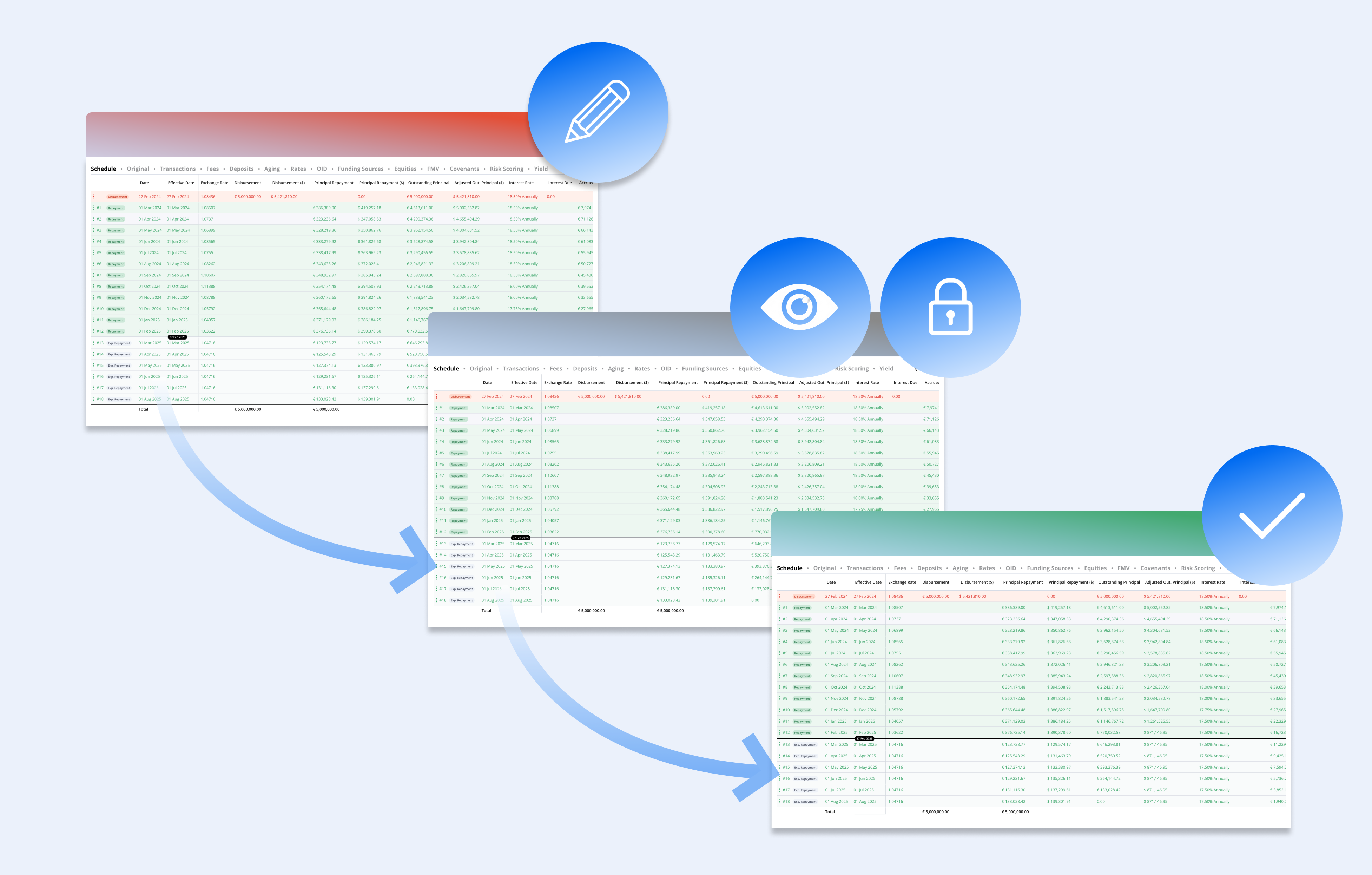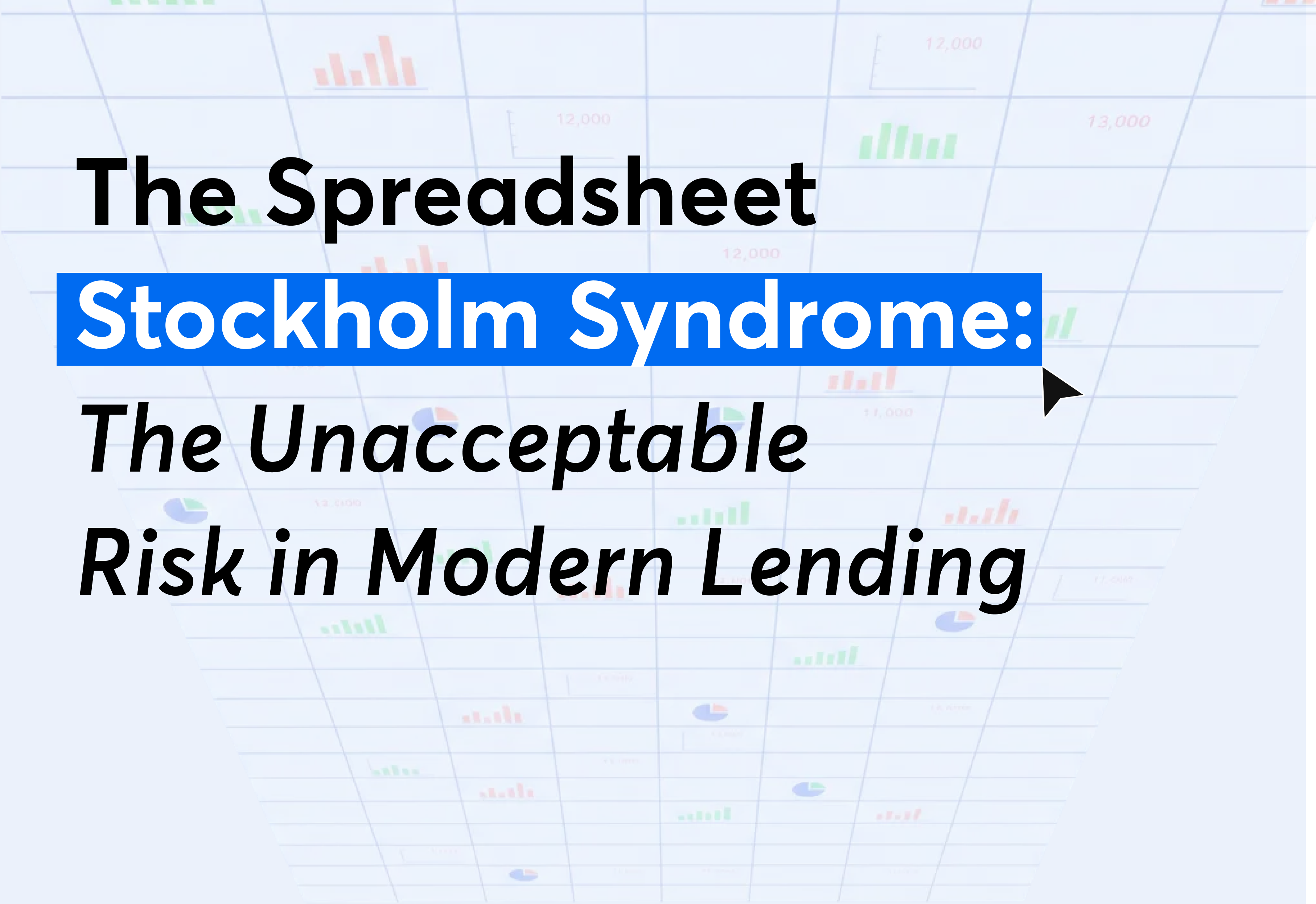Security & Compliance
Data Management

Aug 11, 2025
3 minutes

Governance controls in a loan management platform are structured workflows, permission settings, and immutable audit trails that ensure every material change to loan data is reviewed, authorized, and documented. They work by requiring changes to be drafted, independently approved, compared side-by-side with the original, and permanently logged with timestamps and user attribution. This approach enforces separation of duties, maintains data integrity, and supports compliance with internal policies and regulations such as SOX.
Private credit operations involve high-value transactions, bespoke loan structures, and frequent amendments. Without embedded governance controls, teams risk:
Governance controls provide the framework for provable accountability, making it straightforward to demonstrate that every decision followed the correct process.
Hypercore’s governance controls are built into the platform’s core architecture - not added as an afterthought. The system applies oversight automatically, without requiring teams to maintain separate approval spreadsheets or offline workflows. All changes flow through a central review environment, with context, documentation, and historical data available in one view.
Because controls are native to the loan lifecycle, they stay consistent across origination, servicing, amendments, and restructuring. Compliance teams gain immediate visibility into pending actions, while operations teams avoid the delays and confusion of ad-hoc approvals. This integration means funds can demonstrate governance discipline at any point in time, whether for internal review, regulatory checks, or investor due diligence, without extra preparation.

Data Management
Thought Leadership
Dec 1, 2025